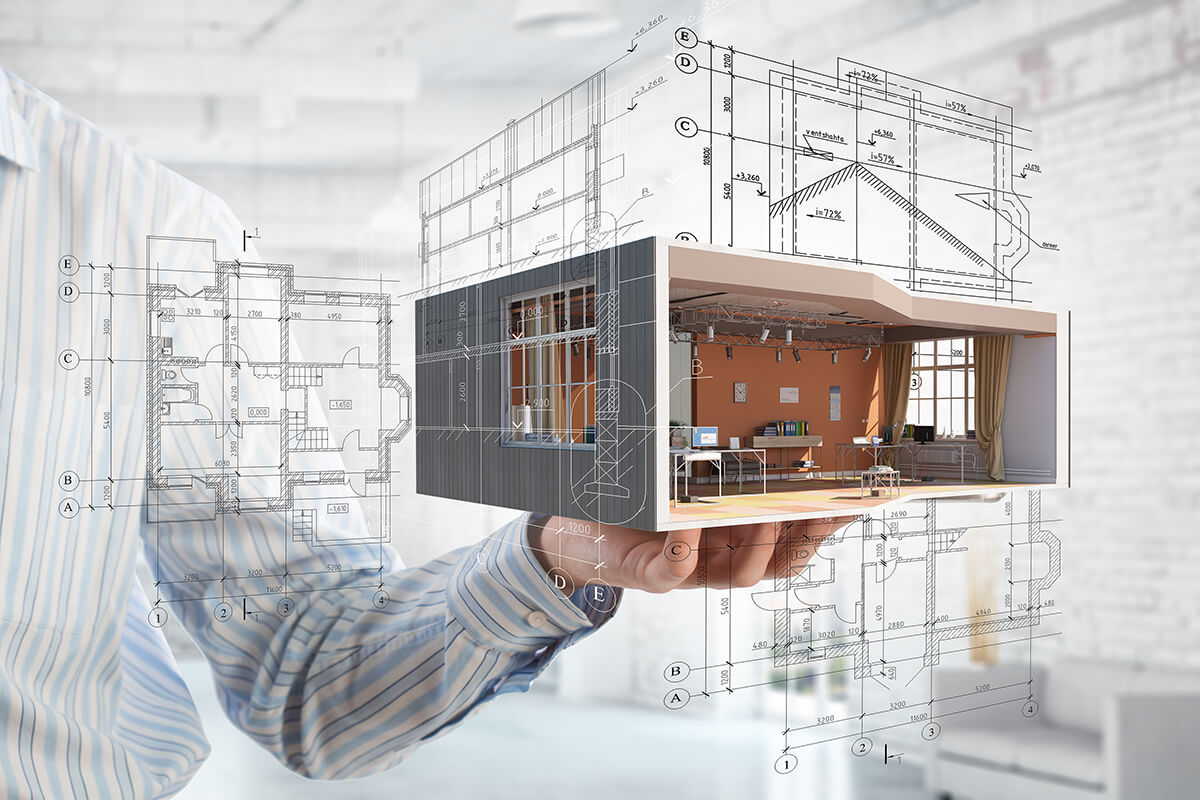Architect-Approved Home Renovation Ideas
Architect-Approved Home Renovation Ideas
Blog Article
Recognizing the Diverse Profession Paths Available for Aspiring Architect
As a hopeful Architect, you have a world of occupation paths waiting for you. Whether you're attracted to traditional architecture or the subtleties of sustainable style, there's a particular niche that aligns with your rate of interests.
Standard Architecture: Designing Buildings and Frameworks
Conventional design concentrates on developing structures and frameworks that mix capability with visual appeal. As you discover this area, you'll value the detailed balance in between form and objective. You'll learn to attract motivation from historic styles, integrating aspects like balance, products, and craftsmanship. Your styles can show cultural heritage, showcasing regional customs while satisfying modern-day demands.
You'll create abilities in preparing, model-making, and site analysis, allowing you to imagine and interact your ideas efficiently. Engaging with clients, you'll need to understand their vision and translate it right into possible layouts.
In addition, developing codes and sustainability methods are vital in your work, guaranteeing your frameworks are risk-free and ecologically friendly. As you grow in your profession, you'll find opportunities in property, industrial, and even repair jobs, each offering special obstacles. Welcoming traditional design leads the way for a satisfying career that admires the past while shaping the future.
Urban Preparation: Forming Communities and Public Spaces
As an ambitious Architect, you can play a vital role as a city planner, changing how areas function and connect. By utilizing community interaction techniques, you'll assure that citizens have a voice in shaping their setting. And also, integrating sustainable style concepts will assist develop spaces that not only fulfill today's needs however additionally safeguard the future.
Duty of Urban Planners
While numerous might think of engineers as the single dreamers behind buildings, urban planners play a vital duty in forming the wider landscape of neighborhoods and public spaces. By collaborating with numerous stakeholders, you'll aid create parks, transportation systems, and domestic areas that advertise social communication and access. Your experience in spatial layout and neighborhood dynamics permits you to imagine future growth while maintaining social heritage.
Neighborhood Engagement Approaches
Efficient community involvement methods are important for city coordinators to guarantee that the voices of homeowners are listened to and valued in the planning procedure. To foster purposeful dialogue, you need to prioritize open forums and workshops where area members can express their concepts and worries. Usage surveys and social media to get to a more comprehensive target market, making certain diverse viewpoints are consisted of. Teaming up with neighborhood companies can improve count on and facilitate deeper links. It is very important to provide clear info concerning decision-making processes and proposed jobs, allowing locals to really feel informed and equipped. By proactively integrating and paying attention feedback, you'll produce rooms that mirror the community's demands, ultimately causing even more sustainable and effective city settings. Embrace transparency and constant discussion for long-term impact.
Sustainable Layout Concepts
When creating urban rooms, including sustainable style principles is critical for developing settings that prosper both ecologically and socially. You ought to start by concentrating on power effectiveness, utilizing materials that decrease waste and promote recycling. Consider incorporating environment-friendly areas, like parks and gardens, to boost biodiversity and enhance air quality. Promoting walkability and public transportation can lessen reliance on vehicles, fostering a much healthier neighborhood.
Designing with water preservation in mind is likewise key-- assume about rainfall gardens and absorptive surfaces to take care of stormwater. Including area members throughout the planning procedure guarantees that the rooms you create meet their demands and encourage social communication. By embracing these principles, you'll add to dynamic, lasting urban landscapes that benefit everyone.

Landscape Style: Developing Sustainable Exterior Settings
As you explore landscape design, you'll discover essential layout principles that create functional and attractive outside spaces. Lasting practices play a vital function in ensuring these settings flourish while decreasing environmental impact. Plus, you'll discover a variety of occupation opportunities that permit you to make a real distinction in how people connect with nature.
Style Concepts in Landscape
Comprehending layout principles in landscape design is essential for producing lasting outdoor atmospheres that harmonize with nature. You'll need to ponder elements like scale, balance, and percentage to guarantee your styles really feel natural and inviting. Integrating indigenous plants not just enhances biodiversity but likewise lowers water usage, making your landscape resilient. Believe regarding the circulation of space and exactly how people engage with it; pathways and seating locations must invite expedition and leisure. In addition, take notice of seasonal changes, developing with materials that match the environments year-round (Architect). By focusing on sustainability and visual appeals, you can produce exterior rooms that improve the area and advertise well-being. Embracing these principles will try these out establish a solid structure for your job in landscape style.
Lasting Practices Introduction
Lasting practices in landscape design not just concentrate on appearances but likewise focus on eco-friendly health and resource conservation. You can create rooms that advertise soil health and wellness, such as making use of organic materials and practicing permaculture concepts. Inevitably, these techniques guarantee your designs benefit both people and the environment for years to come.
Profession Opportunities Exploration
With a solid foundation in sustainable practices, landscape architecture offers a selection of career paths that permit you to make a significant effect on the atmosphere. Urban coordinators typically team up with landscape engineers to produce eco-friendly spaces in metropolitan settings, improving city livability. If you're enthusiastic concerning education, think about becoming a landscape architecture teacher, motivating future generations.
Sustainable Style: Concentrating On Eco-Friendly Practices
As you explore your profession in architecture, welcoming green techniques can set you apart in a competitive area. Lasting layout concentrates on creating structures that lessen ecological effect while boosting passenger health. By including renewable products, energy-efficient systems, and sustainable structure methods, you'll contribute to a greener future.
Beginning by obtaining knowledge of green certifications like LEED or BREEAM, which can boost your qualifications. Consider how natural light, air flow, and thermal efficiency can enhance layout. Team up with designers and ecological specialists to introduce options that minimize waste and save resources.
Don't fail to remember the importance of area participation-- interesting neighborhood stakeholders can motivate styles that harmonize with the setting. As customers significantly prioritize sustainability, your know-how in green methods will not just attract tasks but also accomplish your passion for accountable architecture. Accept this critical aspect of the occupation, and enjoy your job thrive.
Historical Preservation: Shielding and Recovering Cultural Heritage
While you begin on your architectural trip, think about the vital function of historic conservation in maintaining our social heritage. This area concentrates on the protection and remediation of find more significant structures, websites, and structures that tell the tales of our past. By engaging in historic conservation, you'll aid secure the architectural legacy that forms neighborhood identity.
As a historic conservation Architect, you'll assess historical value and analyze the condition of frameworks. You'll work very closely with historians and conservationists to assure authentic repair techniques are utilized. This career path allows you to blend creative thinking with research, allowing you to design remedies that appreciate original materials and workmanship.
Your work not only adds to sustainability by reusing existing structures but additionally promotes a feeling of pride within areas. Embracing this course will certainly aid you come to be a guardian of background, preserving the tales and visual appeals that enrich our lives.
Inside Architecture: Enhancing Indoor Spaces
Historical preservation and indoor architecture both share a commitment to boosting the constructed environment, however they concentrate on various aspects. While historic preservation highlights keeping a framework's historical and cultural value, interior design nos in on maximizing interior spaces for performance and aesthetics.
As a hopeful Architect, you'll discover that interior design enables you to mix creative thinking with technological skills. You'll develop areas that not only look great however likewise advertise convenience and performance. This area entails recognizing just how light, color, and products engage within an area, affecting state of mind and functionality.
You'll work on different projects, from residential homes to business offices, making certain that each atmosphere fulfills the needs of its passengers. By focusing on customer experience, you can change insides right into motivating and practical rooms, making a considerable effect on just how people engage with their environments. Embrace the chance to boost interior atmospheres and form the method people work and live.
Industrial Style: Merging Functionality With Aesthetics
Industrial layout plays an essential role in creating items that seamlessly mix appearances with functionality, ensuring that what you make use of everyday is not only aesthetically attractive but additionally useful. As an aspiring Architect, you could involve yourself in this area, concentrating on making every little try these out thing from furniture to customer electronics. Your job includes recognizing individual demands, materials, and manufacturing procedures, allowing you to develop innovative remedies that enhance day-to-day experiences.
In industrial style, you'll typically collaborate with marketing experts, manufacturers, and engineers, making sure that your layouts are not just stunning however additionally feasible. You'll learn to balance type and feature, focusing on usability without sacrificing style. By refining your abilities in sketching, 3D modeling, and prototyping, you'll be well-equipped to bring your ideas to life. This occupation course uses a vibrant setting where creative thinking meets practicality, making it a gratifying option for designers thinking about forming the items of tomorrow.
Often Asked Questions
What Educational Qualifications Do I Required to End Up Being an Architect?
To come to be an architect, you'll require an expert level in design, generally a Bachelor's or Master's. In addition, you'll need to complete a teaching fellowship and pass the Architect Registration Evaluation to practice legally.
Are There Accreditation Requirements for Different Architectural Profession Paths?
Yes, there're qualification demands for various building paths. Architect. You'll require to pass exams, total internships, and often pursue specialized training, relying on your chosen emphasis, like landscape architecture, city style, or historical preservation
What Software Program Skills Are Crucial for Architects Today?

How Can I Gain Practical Experience While Researching Design?
You can gain functional experience by interning at architectural companies, joining layout competitors, volunteering for area projects, or teaming up with classmates on real-world jobs. These chances enhance your abilities and build beneficial links in the industry.
What Job Opportunities Exist Outdoors Traditional Style Firms?
You can check out various job possibilities outside standard design firms, like city preparation, interior decoration, landscape design, building and construction administration, realty advancement, or even functions in sustainability consulting. Each offers distinct obstacles and benefits.
Whether you're drawn to conventional design or the nuances of lasting layout, there's a specific niche that lines up with your passions.When designing urban areas, integrating lasting layout principles is vital for developing settings that thrive both ecologically and socially.As you check out landscape style, you'll uncover vital layout principles that produce gorgeous and useful exterior spaces.Comprehending style principles in landscape design is vital for producing lasting outside atmospheres that balance with nature.In industrial style, you'll typically work together with online marketers, engineers, and makers, making certain that your designs are not only beautiful but additionally feasible.
Report this page